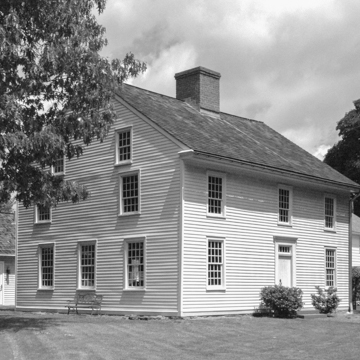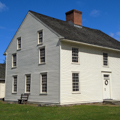Colonel Nathan Denison was second in command of the colonists who fought the British at the battle of Wyoming in 1778. After leading survivors to safety he returned to Forty Fort to work as a farmer and raise seven children. Following the adoption of the Pennsylvania Constitution in 1790, he served until his death in 1809 as a judge of the Luzerne County Court of Common Pleas. His house, according to oral tradition, was patterned after his house in Connecticut. It is a timber framed, weatherboard walled house with a
You are here
Nathan Denison House
1790, John Carpenter. 35 Denison St. at Wyoming Ave.
If SAH Archipedia has been useful to you, please consider supporting it.
SAH Archipedia tells the story of the United States through its buildings, landscapes, and cities. This freely available resource empowers the public with authoritative knowledge that deepens their understanding and appreciation of the built environment. But the Society of Architectural Historians, which created SAH Archipedia with University of Virginia Press, needs your support to maintain the high-caliber research, writing, photography, cartography, editing, design, and programming that make SAH Archipedia a trusted online resource available to all who value the history of place, heritage tourism, and learning.
























